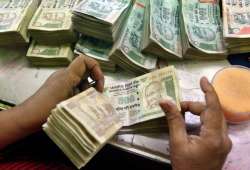Banks’ asset quality recovery may get delayed due to demonetisation: Fitch
The demonetisation of high value currencies (Rs 500 and Rs 1,000) and the subsequent cash crunch is expected to push back the asset quality recovery of Indian banks, said Fitch Ratings. The impact of demonetisation

The demonetisation of high value currencies (Rs 500 and Rs 1,000) and the subsequent cash crunch is expected to push back the asset quality recovery of Indian banks, said Fitch Ratings.
The impact of demonetisation on asset quality will start showing significantly in data for the January-March quarter, the rating agency said.
“Demonetisation is likely to push back the recovery in Indian banks’ asset quality, given the disruptive impact that cash shortages have had on the country’s large informal economy,” Fitch Ratings said in a statement.
Cash shortages caused by the demonetisation of large denomination currency notes have affected the income of many borrowers by holding back economic activity and reduced their short-term repayment abilities.
The Reserve Bank of India has allowed forbearance on some loans to the agricultural sector and small businesses, but these account for a relatively small share of outstanding lending, Fitch said.
Fitch had previously expected the stressed-asset ratio for Indian banks to increase to 12 per cent for the fiscal ending March 2017, from 11.4 per cent in FY’16.
“There is now a risk that the ratio will climb higher. We still believe that asset-quality indicators are close to their weakest level and will recover slowly over the next few years, but any turnaround is likely to have been pushed back by at least two quarters,” it said.
Demonetisation has also weighed on loan growth, at least in the short term as demand weakened in the uncertain economic environment and banks have had to focus on cash management instead of normal lending activities.
Loan growth slowed to 4.8 per cent in November 2016, from 6.7 per cent in October. We now think it is likely that loan growth will be below our previous forecast of 10 per cent in FY17 and may even slow from the 8.8 per cent recorded in FY16, Fitch said.
Banks have received a surge of low-cost funds as demonetised notes were deposited. Deposit growth accelerated to 15.9 per cent y-o-y in November, from 9.2 per cent in October, and the handful of banks that have released figures for the October-December quarter have reported low-cost deposit growth of 25-30 per cent y-o-y.
“We think there is scope for further lending rate cuts, but much will depend on the proportion of new deposits that remains in the banking system. The lasting impact on bank deposits — and lending rates — will become clear only after withdrawal limits are lifted,” Fitch added.
Government had demonetised 500 and 1,000 rupee notes on November 8, 2016. It had then asked holders of such notes to deposit in bank accounts. Since then an estimated Rs 15 lakh crore have been deposited in banks.
PTI inputs